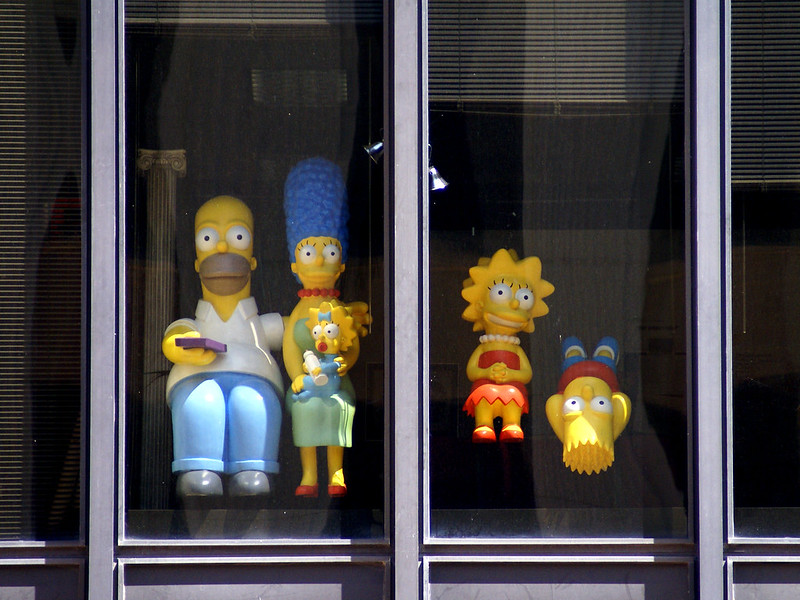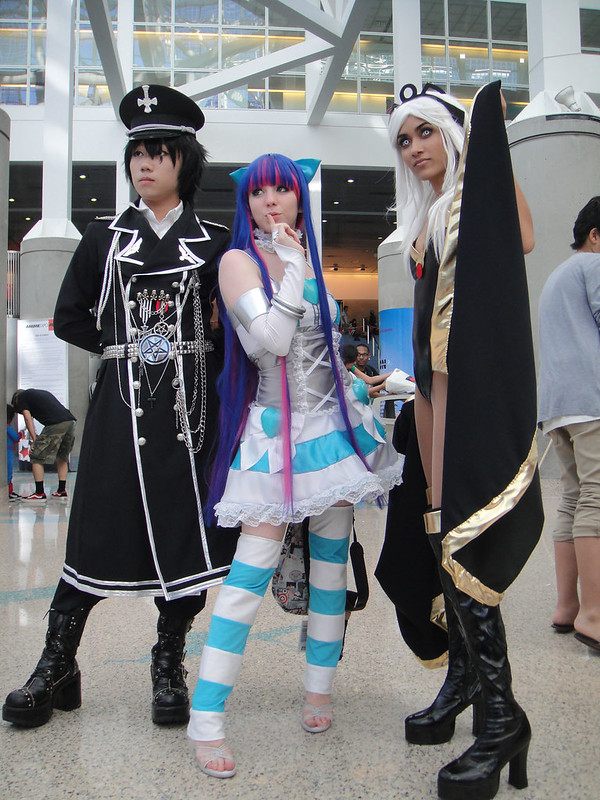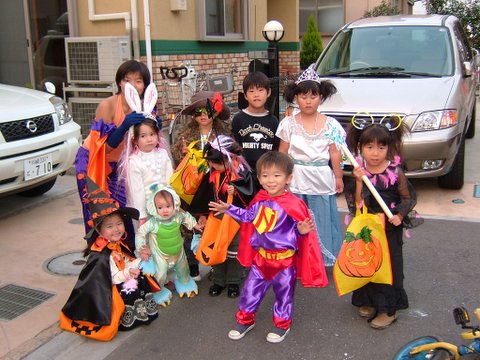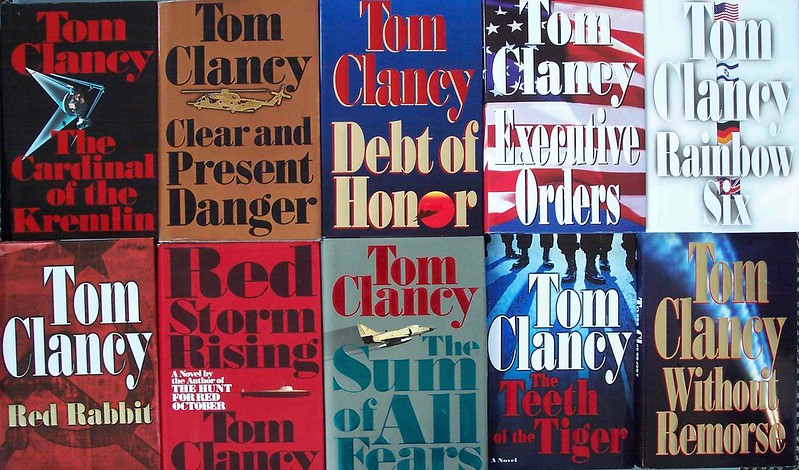Chapter 8 – Popular Culture and Social Media
Learning Outcomes
When you have completed this chapter you should be able to do the following:
- Describe and define popular culture.
- List and explain various ways we consume popular culture.
- Describe the differences between folk, low, and high culture.
- Understand and explore the ways popular culture is created.
- Understand and explore the ways that popular culture influences culture.
- Describe the ways to resist popular culture.
How important do you think popular culture is within your life? Are you constantly listening to the newest music? Do you enjoy watching the most recent episode of something on Amazon Prime or Netflix? Or do you follow social influencers on YouTube? Look around your house. Have your purchases been influenced by the Disney Corporation, Game of Thrones, World of Warcraft, or Peppa the Pig? The most common forms of popular culture are movies, music, television, video games, sports, entertainment news, fashion, and various forms of social media.
Some of us may be very selective in our consumption of popular culture, but it’s difficult to find someone who has not been touched by popular culture at all. Even if the mere mention of popular culture makes you roll your eyes and sigh, most of us—no matter what nation you are a citizen of—have been impacted by the economic and social impact of popular culture. This chapter will explore the significant roles that pop culture and social media play in terms of how people and cultures are socialized to thing about themselves, others, and the process of intercultural communication.

8.1 – Why Pop Culture and Social Media?
So why have a chapter on popular culture in an intercultural communication book? “Popular culture is intimately connected with education, mass communication, production, and a society’s ability to access knowledge” (Campbell, Intellectbooks.com). From an intercultural communication perspective, popular culture is usually our first exposure to other cultures. It is the place that we learn about those who are different than us. Martin & Nakayama believe that “popular culture is a lens for viewing other cultural groups” (2011, p. 202). Research tells us that people use popular culture to learn about other cultures, to re-affirm their own cultural identities, and to reinforce stereotypes. In other words, popular culture plays a powerful role in how we think about and understand ourselves as well as others.
For our purposes, the characteristics of popular culture are considered to fulfill social functions within a culture and are considered a cultural socialization agent. As a socialization agent, the messages and images that appear on television, radio, in print, hand-held devices, on large screens, the internet, and other forms of new media, can have a tremendous influence on how people view themselves and others. Because of this, the governments in some countries ban certain types of programming or only allow programming with specific agendas.
Convergence
Each era is marked by changes in technology. What happens to the “old” technology? When radio was invented, people predicted the end of newspapers. When television was invented, people predicted the end of radio and film. New technologies don’t mean that the old technologies simply vanish, people still read newspapers, listen to the radio, and watch TV, but now it’s possible to do all those things through one device—be it computer or smartphone—through the medium of the internet. Convergence is the process by which previously distinct technologies come to share content, tasks, and resources. Not clear about this yet? Think about your smartphone. It can take pictures, act as an alarm clock or a flashlight. You can access and read this textbook, send text messages, listen to the music, watch videos, and check the news.

The idea of convergence is not limited to technology though. Theorist Henry Jenkins breaks down convergence into five categories: economic, organic, cultural, global, and technological. Although all five categories are fascinating, we will consider just two categories: cultural and global convergence.
Cultural Convergence
Cultural convergence has two different aspects. One is that content flows across several kinds of platforms. For example, novels that become television series or movies (Dexter or To All the Boys I’ve Loved Before); manga, webtoons, graphic novels, or comics that become movies or series (Love Alarm or The Black Panther); even amusement park rides that become film franchises (Pirates of the Caribbean). And then there’s Harry Potter who exists in books, films, toys, amusement park rides, candy bars, and more!
Another aspect of cultural convergence is participatory culture or fan culture (we’re using the term culture loosely here)—that is the way that consumers can annotate, comment on, remix, and otherwise talk back to culture in unprecedented ways. Participatory fans are on the forefront of blending all the different elements of our shared culture and often doing it across national boundaries.

Global Convergence
Global convergence is the process of geographically distant cultures influencing one another despite the geographic obstacles that separate them. Nigeria’s “Nollywood” cinema takes its cues from India’s “Bollywood,” which of course came from Hollywood. Old Tom and Jerry cartoons and newer Oprah shows are popular on Arab satellite television channels; successful American horror movies like The Ring and The Grudge are remakes of Japanese hits. The hit television show “American Idol” was a remake of a British show.
The advantage of global convergence is worldwide access to a wealth of cultural influence. Its downside can be the threat of cultural imperialism. Cultural imperialism is the way that developing countries are “attracted, pressured, forced, and sometimes bribed into shaping social institutions to correspond to, or even promote, the values and structures of the dominating center of the system (Schiller, 1969). In other words, less powerful nations lose their cultural traditions as more powerful nations spread their culture through their media and popular culture. Cultural imperialism can be a formal policy, or it can happen more subtly, as with the spread of the outside influences of popular culture.
When culture becomes a commercial commodity, the fear of the homogenization of cultures rises. People from different parts of the world can learn to dress, eat, consume, and communicate in the same ways. Localized cultural diversity could become endangered as a dominant, globalized culture becomes the norm. As Martin & Nakayama (2011, p. 202) note “There is no easy way to measure the impact of popular culture, but we need to be sensitive to its influences on intercultural communication because, for so many of us, the world exists through popular culture.”

8.2 – Cultural Attributes
We can sort the world into regions based on cultural attributes. We can also sort the material artifacts of culture into three general attribute areas: popular, high, and folk culture.
Historically humans have lived in small groups practicing folk culture. Much of folk culture dates to a time of human cultural development that was dependent on agriculture. The industrial age ushered in the idea of popular culture. Pop culture is a phenomenon in which large numbers of people in very different places are adopting the same or similar culture practices due to globalization. Seemingly timeless yet elite aristocratic expressions of culture are known as high culture.

Popular Culture
Popular culture is associated with the everyday, the mainstream, and that which is commonly accessible. It is culture produced for mass consumption and commercial gain. In other words, popular culture has huge appeal and functions to bind together large masses of people into a unified cultural identity.
Pop culture or low culture as it is sometimes referred to, has been described as (Stott, 2004) being commercially successful, self-sustaining, and self-perpetuating. TikTok and all its video challenges are a great example. Pop culture is always looking for the “new,” but the new is often recycled from previous generations, other cultures, or folk cultures. Pop culture can be revolutionary, though this is often unintentional.
It is common for popular culture to produce spectator-participants who form a community of believers or adherents to the culture they are consuming. These spectator-participant communities can have a powerful identity role and become a “glue” which binds members together. Discord is filled with such communities often called servers. Certain forms of pop culture are characteristic of certain co-cultures. Pop culture celebrates the people who are experiencing it.
Pop culture can be viewed from multiple evaluation points (Hammond, 2014), allowing individuals the freedom to assess and form opinions about topics. For example, a social media group talking about a new TV show versus a more in-depth program that explores the director’s vision for the show or even a website interviewing the actors from the show.
The origins of pop culture lie in the American Industrial Revolution of the late 18th century when rural people migrated to American cities in large numbers (McAdams, 2014). The newly emerging and densely populated cities allowed news of cultural items to spread rapidly. New means of mass production and the rise of the middle class made consumption of cultural items less expensive and easier to find. After World War II, innovations in radio and television broadcasting or mass media also led to significant cultural and social changes.
High Culture
High culture, on the other hand, isn’t meant for mass consumption. It might not be easily available to everyone. Consumers might need training or education to fully appreciate the benefits of high culture. It’s also possible that consumers of high culture might need to purchase costly equipment or memberships to participate in high cultural activities. Because of these limitations, high culture often belongs to social or economic elites, and does not often cross over into the realm of the masses. In the US, examples of high culture could be opera, ballet, classical music, an appreciation of fine wine, horse polo matches, or other items associated with “sophisticated” tastes.
Folk Culture
If popular culture is for the masses, and high culture is for the elites, folk culture is a localized form of culture. Folk culture refers to the rituals and traditions that maintain a cultural group identity. According to Wikipedia, “folk culture is quite often imbued with a sense of place. If elements of folk culture are copied by, or moved to, a foreign locale, they will still carry strong connotations of their original place of creation” (7/21/19). Examples of US folk culture could be quilt-making, powwows, cakewalks, hula, Shaker furniture, corn dogs, and Creole cuisine.

Folk culture often informs pop culture and has even influenced high culture, but once folk cultural icons have become so internationalized that they have lost their original sense of place, they are no longer part of folk culture. An example of this could be the Seattle Seahawks football team emblem. The original 1975 emblem was derived from a picture of a Kwakwaka’wakw tribal mask found in an art book (http://wearefanatics.com/seattle-seahawks-logo, ret. 8/28/19). Most Seahawk fans will recognize the NFL logo instantly but have little or no understanding that a “sea hawk” is the nickname for an osprey, and that the original sea hawk mask used as a basis for the team emblem was a “transformational” mask with a specific religious meaning (https://www.audubon.org/news/what-seahawk-anyway, ret. 8/28/19).

Cultural Attribute Diffusion
Similar, but not the same as global convergence, cultural diffusion is about the geographical and social spread of different aspects of one or more cultures. Whereas global convergence is more about the import of a cultural product from one place to another, cultural diffusion is about the creative processes and adaptation of cultural traditions and ideas.
There are many types of cultural diffusion, but some examples would be US originated fast-food restaurant McDonalds developing different menu items for different parts of the world. Or the spread of musical forms such as “Dancehall” which came from Jamacia has now clearly influenced some of the music from Drake or Rihanna and Brazilian artist Lai Di Dai.
If you are interested in how popular culture impacts your life, look around. Did you buy a lot of Vans because your really like them? How many of your friends own them? Next check your clothing. Are you buying things because you like them or because they are popular?
What about your entertainment choices? The 2019 DC Comics film, AQUAMAN, grossed over $1 billion dollars making it the highest-grossing DC Comics film. A former student and her husband looked forward to watching it because of its popularity, but was disappointed when they finally saw it. “We sat and watched the entire thing even though it was cheesy and not very well made. Why? Probably because we have watched many other superhero movies over the years that have taken over the movie scene” (Hein, 2019). According to CNBC.com, “more than 70% of the film’s revenue came from countries outside the US” (https://www.cnbc.com/2019/01/08/aquaman-nears-billion-dollar-bench-mark-thanks-to-international-sales.html, ret. 8/18/19).
According to Kathryn Sorrells (2013, pp. 142-144), there are several ways that we can become informed consumers of popular culture. First, we should increase awareness of what role media plays in forming views, normalizing ideas, and spreading stereotypes. Second, we need to understand that we have a choice in what media we consume and what we don’t. And third, we do not have to accept what mass media promotes. Kalle Lasn, author of Cultural Jam (2000), introduced the idea of cultural jamming which is a form of public activism that helps us to become better interpreters of media rather than simply consumers.
8.3 – The Power of Pop Culture
The US not only consumes a lot of pop culture but is also responsible for creating much of it. The economic prosperity of the United States at the beginning of last century created cultural industries. The term cultural industry was created by Theodor Adorno and Max Horkheimer (1944; 1993) to mean the creation, production, and distribution of goods and services that are cultural in nature and usually protected by intellectual property rights. The globalizing forces of trade & international commerce, plus media & communication technology plus the arts & languages are behind the rise of US pop culture. In the 1920s, US media was exported to boost sales of US products. Among the major sponsors of such programming were Procter & Gamble, Colgate-Palmolive, and Lever Brothers, all US manufacturers of soap and cleaning products, thus the term soap opera came into being for the daytime dramas that also became popular exports by themselves.
The growth of the influence of US television has also impacted the international film industry. In 1987, US films captured 56% of the European film market. Less than a decade later, that statistic rose to 90% (Dager, n.d.). Recently, the market share across Western Europe has ranged from 60-75% (Hopewell, 2013). In such a lop-sided import/export market, concerns are often raised. “Not only do foreign nations worry about their own domestic entertainment industries from an economic standpoint, but they also worry about the effects on their culture” (Levin Institute, 2017).
Other countries have taken notice in recent decades, and some of those countries have begun to focus on developing pop culture as an economic engine and international export. Take South Korea for instance. In the 1990s the South Korean government realized that the Hollywood blockbuster, Jurassic Park, was the equivalent value of foreign sales of 1.5 million Hyundai cars so it shifted its national export strategy from manufactured goods to cultural products like movies and music (Lee, 2022). The shift has ultimately paid off. Chinese audiences are huge fans of Korean television dramas. The K-pop artists, BTS were recently invited to the White House to mark the final day of Asian America, Native Hawaiian, and Pacific Islander Heritage Month where they briefly discussed anti-Asian hate crimes with President Biden.

The Hallyu Wave (Korean Wave) has become a legendary example of “soft power” that South Korea has begun to accumulate in international relations. Growing familiarity with any nation’s culture translates into easier governmental and stronger commercial relationships around the world (Lee, 2022). Squid Games anyone?
8.4 – Cultural Values and Pop Culture
There has been a plethora of interesting research on social media and pop culture from an intercultural communication perspective. As the focus of this class is to introduce all aspects of intercultural communication, we can only cover a few highlights in this chapter.
Researchers Daniel and Musgrave (2017) have illustrated that the “synthetic experiences” of pop culture and social media (films, novels, television, video games) can change beliefs, reinforce preexisting views, or even displace knowledge gained through more traditional ways of learning about other cultures. They explored how a Tom Clancy book influenced US relations with the Soviet Union and 9/11.

Another researcher (Abdullah, 2019) studied the correlation between the willingness to learn the English language and being exposed to pop culture and social media. The correlation was so high that the author encouraged teachers to allocate as much time as possible to using pop culture to help students learn English.
Intercultural scholar, Chen Guo Ming, has stated that pop culture and social media “not only influences the form and content of information/messages, but it also affects how people understand each other in the process of human communication, especially for those from different cultural or ethnic groups (2012, pp.3).” He has explored changes in e-communication, cultural identity, intercultural relationships, adaptation, and intercultural conflict.
8.5 – Consuming and Resisting Pop Culture
People negotiate their relationship to pop culture in interesting and complex ways. To maintain or reshape our identities, we both resist popular culture, and actively consume it. If a social group participates forms of pop culture, individuals often feel that they should participate as well. On the other hand, if a social group has concerns about pop culture, individuals will often refuse to engage with that form as well.
Facebook usage is a great example of this. According to Statista.com (ret. 7/25/19), seventy-nine percent of 18-49 year-olds in the United States used Facebook in February of 2019 while only forty percent of the 65 and older group did. According to the Pew Research Center (ret. 7/25/19), those in the 18-24 range embrace a variety of platforms (YouTube 94%, Snapchat 78%, Instagram 71%, and Twitter 45%) by visiting them multiple times (71%) a day. Interestingly enough, popular culture does not have to win over the majority of the people to be considered “popular.” With usage by approximately a quarter of the world’s population, Facebook or Meta can be considered an elite purveyor of pop culture.

8.6 – Conclusion
Popular culture is constantly evolving and is unique to the time and place in which it occurs. Societal influences and institutions merge and diverge to appeal to a broad cross-section of people within a culture. According to Internet Live Stats (ret. 2/27/18) there are 3.5 billion Google searches per day. Whether you embrace it or resist it, popular culture serves important cultural functions. Those functions are connected to cultural identities both personal and national. Pop culture is also an economic force that influences how we get information about, and understand, other cultural groups.
Key Terms
- Cultural Socialization Agent
- Participatory Culture
- Cultural Imperialism
- Folk Culture
- Convergence
- Fan Culture
- Popular Culture
- Low Culture
- Cultural Diffusion
- Cultural Convergence
- Global Convergence
- High Culture
- Cultural industry
- Soap opera
- Cultural jamming
Reflection Questions
- What do we know about places that we have never been and how do we know it? Give several examples where popular culture (e.g. social media, magazines, videos, influencers, etc.) has influenced your understanding of a culture or place that you have no direct experience with, and how that aspect of popular culture has impacted you.
- We all have our “favorite” forms of popular culture (e.g. Instagram or Snapchat over Facebook plus texting over phone calls, etc.). Explain why you have selected some forms of popular culture over others? Choose two.
- The popular culture we prefer and consume is often influenced and intimately tied to our identities. Given two examples about how popular culture consumption has reflected or shaped your cultural identity? Has this “shaping” been minimal or life-changing?
- Some people actively resist ALL or selective parts of popular culture. Do you resist popular culture? What parts? Explain why.
- What types of assumptions might people from outside the United States make about the US after watching an episode of The Real Housewives of … orThe Voice? Have you ever had an experience explaining how your life is NOT like television or the movies? Please explain.
The characteristics of popular culture that are considered to fulfill social functions within a culture.
The process by which previously distinct technologies come to share content, tasks, and resources.
When different cultures become similar or even merge together.
The way that consumers can annotate, comment on, remix, and otherwise talk back to culture in unprecedented ways.
The process of geographically distance cultures influencing one another despite the geographic obstacles that separate them.
The way that developing countries are attracted to, pressured, forced, and sometimes bribed into shaping social institutions to correspond to, or even promote, the values and structures of the dominating center of the system.
Being commercially successful, self-sustaining, self-perpetuating, and readily available to the masses.
Being commercially successful, self-sustaining, and self-perpetuating.
Often belongs to social or economic elites, and does not often cross over into the realm of the masses.
Refers to the rituals and traditions that maintain a cultural group identity.
The geographical and social spread of different aspects of one or more cultures.
Form of public activism that helps us to become better interpreters of media rather than simply being consumers of culture.
The creation, production, and distribution of goods and services that are cultural in nature and usually protected by intellectual property rights.
A television or radio drama series dealing typically with daily events in the lives of the same group of characters.

